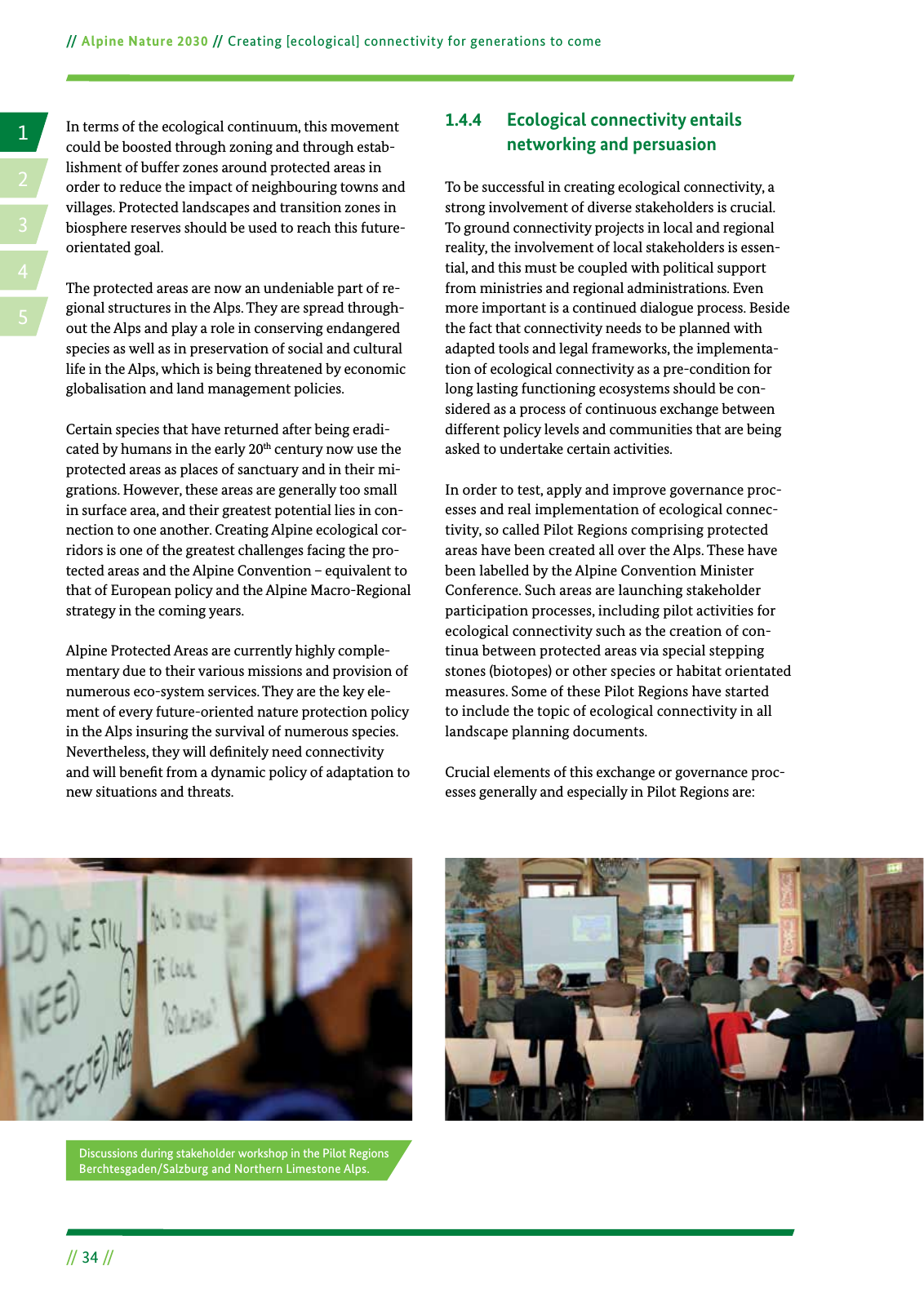14 2 5 3 34 Alpine Nature 2030 Creating ecological connectivity for generations to come Discussions during stakeholder workshop in the Pilot Regions Berchtesgaden Salzburg and Northern Limestone Alps In terms of the ecological continuum this movement could be boosted through zoning and through estab lishment of buffer zones around protected areas in order to reduce the impact of neighbouring towns and villages Protected landscapes and transition zones in biosphere reserves should be used to reach this future orientated goal The protected areas are now an undeniable part of re gional structures in the Alps They are spread through out the Alps and play a role in conserving endangered species as well as in preservation of social and cultural life in the Alps which is being threatened by economic globalisation and land management policies Certain species that have returned after being eradi cated by humans in the early 20th century now use the protected areas as places of sanctuary and in their mi grations However these areas are generally too small in surface area and their greatest potential lies in con nection to one another Creating Alpine ecological cor ridors is one of the greatest challenges facing the pro tected areas and the Alpine Convention equivalent to that of European policy and the Alpine Macro Regional strategy in the coming years Alpine Protected Areas are currently highly comple mentary due to their various missions and provision of numerous eco system services They are the key ele ment of every future oriented nature protection policy in the Alps insuring the survival of numerous species Nevertheless they will de nitely need connectivity and will bene t from a dynamic policy of adaptation to new situations and threats 1 4 4 Ecological connectivity entails networking and persuasion To be successful in creating ecological connectivity a strong involvement of diverse stakeholders is crucial To ground connectivity projects in local and regional reality the involvement of local stakeholders is essen tial and this must be coupled with political support from ministries and regional administrations Even more important is a continued dialogue process Beside the fact that connectivity needs to be planned with adapted tools and legal frameworks the implementa tion of ecological connectivity as a pre condition for long lasting functioning ecosystems should be con sidered as a process of continuous exchange between different policy levels and communities that are being asked to undertake certain activities In order to test apply and improve governance proc esses and real implementation of ecological connec tivity so called Pilot Regions comprising protected areas have been created all over the Alps These have been labelled by the Alpine Convention Minister Conference Such areas are launching stakeholder participation processes including pilot activities for ecological connectivity such as the creation of con tinua between protected areas via special stepping stones biotopes or other species or habitat orientated measures Some of these Pilot Regions have started to include the topic of ecological connectivity in all landscape planning documents Crucial elements of this exchange or governance proc esses generally and especially in Pilot Regions are

Hinweis: Dies ist eine maschinenlesbare No-Flash Ansicht.
Klicken Sie hier um zur Online-Version zu gelangen.
Klicken Sie hier um zur Online-Version zu gelangen.